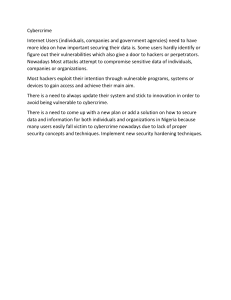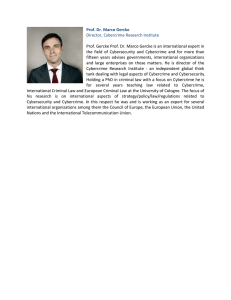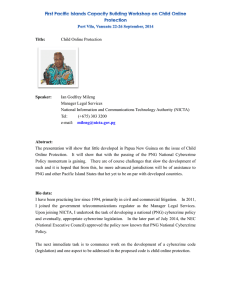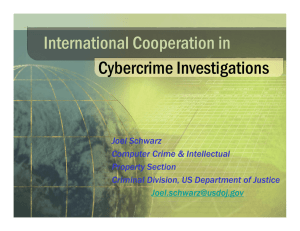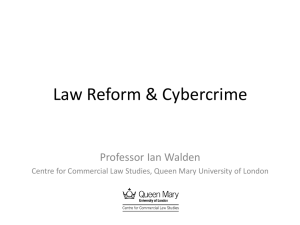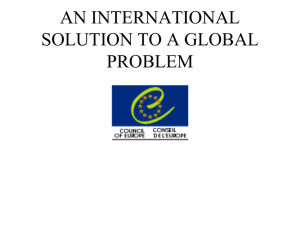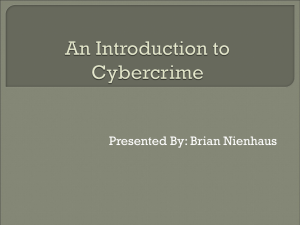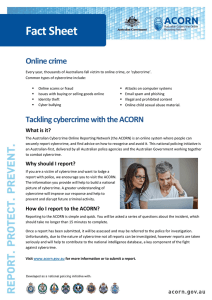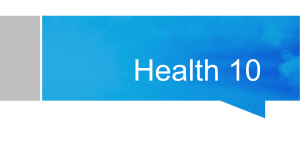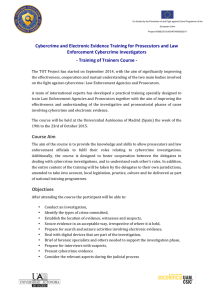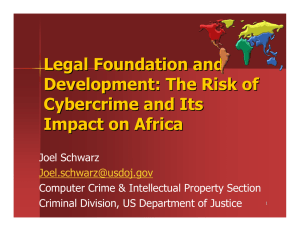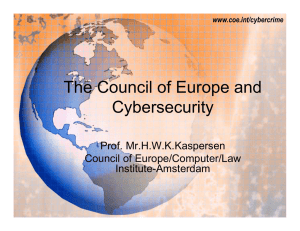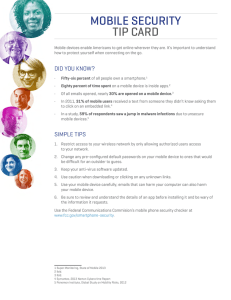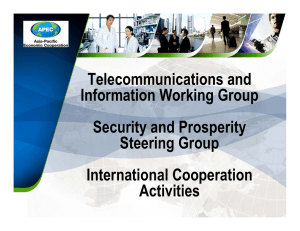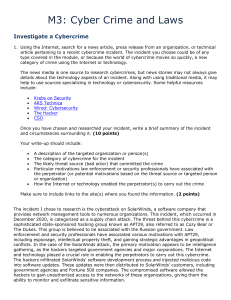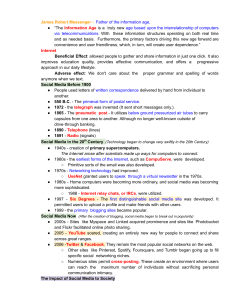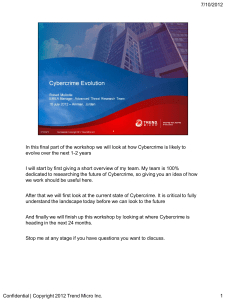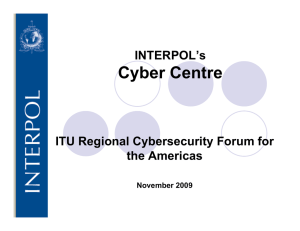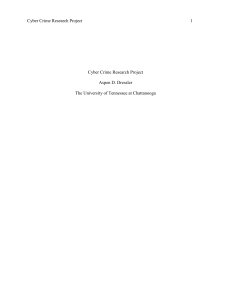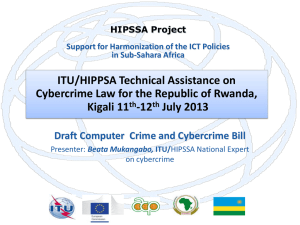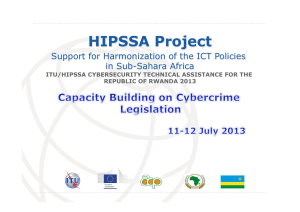Julie Inman Grant, Director of Internet Safety and Security Microsoft Asia Pacific
advertisement
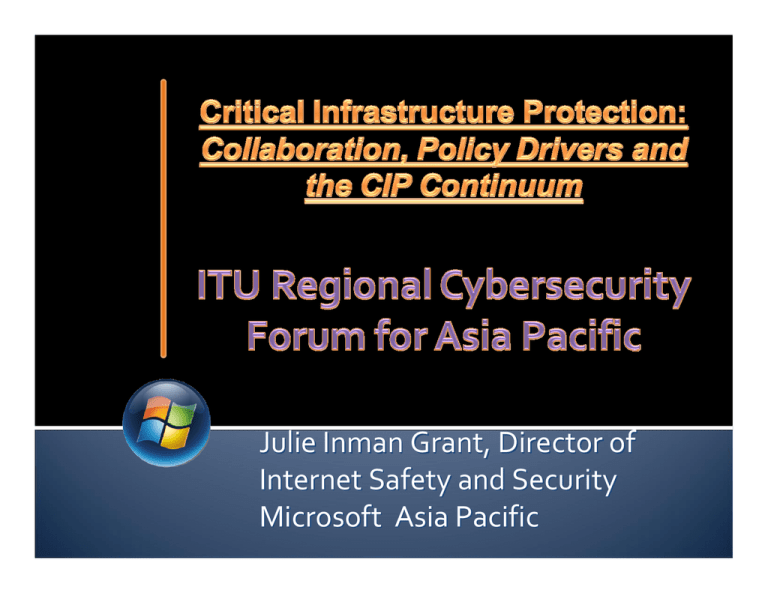
Julie Inman Grant, Director of Internet Safety and Security Microsoft Asia Pacific Vision Critical Software and Services: trustworthy, resilient, and innovative Mission Advance the integrity and resiliency of critical software and services through trusted relationships, effective policies, and transparent practices. What are they? Critical infrastructures are generally thought of as the key systems, services, and functions whose disruption or destruction would have a debilitating impact on public health and safety, commerce, and/or national security. These include, but are not limited to, communications, energy, banking, transportation, public health and safety, and essential government services. 2 Understanding Roles Promotes Coordination Understanding Roles Promotes Government “What’s the goal” Coordination Define Policy and Identify Roles Determine Acceptable Risk Levels Determine Acceptable Risk Levels Public-Private Partnership “What’s critical” Infrastructure “Prioritize Risks” M easure Effectiveness Assess Risks Implement Controls Identify Controls and M itigations Operators “Best control solutions” Understanding roles and objectives promotes trust and efficiency CIIP Coordinator (Executive Sponsor) Public‐Private Partnerships Infrastructure Owners and Operators Law Enforcement Sector‐ Specific Agency Government Computer Emergency Response Team Shared IT Vendors and Solution Providers Private ICASI is a collaborative effort among the leading global IT vendors committed to: •Increasing the speed and effectiveness of multi-vendor, cross-product, and cross-border security response •Developing a common operational response protocol •Sharing knowledge of current and future threats •Providing industry expertise on In 2002, Microsoft established Trustworthy Computing as a top company priority. Our commitment to TWC extends beyond the desktop to the broad cyber ecosystem. Drawing upon its work with global partners, coupled with more than three decades of its own experiences, Microsoft has learned that effective critical infrastructure protection efforts share three central areas of focus. Understanding the policy context is key to success War Terrorism Globalization Convergence Cyber Attacks Natural Disasters Laws and Regulations Directives/Policies Emergency Response Plans National Strategies Cybercrime legislation is essential to building trustworthy plans and policies and ultimately enabling resilient operations Conducting a thorough review of existing cybercrime laws is an important part of preparing for developing national CIP strategies/plans. Establishing appropriates statutes and developing LE capabilities increase national capabilities for risk management, incident response and long‐term deterrence of crime. Regional study of computer security, privacy, spam and online child safety laws Updated in October 2007 Covers fourteen countries in the Asia Pacific region Australia China Hong Kong India Indonesia Japan Malaysia New Zealand The Philippines Singapore South Korea Taiwan Thailand Vietnam Domestic laws compared against benchmark legislation Council of Europe Convention on Cybercrime (2001) ⇒ Title 1 – Offences against the confidentiality, integrity and availability of computer data and systems ▪ ▪ ▪ ▪ ▪ Illegal access Illegal interception Data interference System interference Misuse of devices ⇒ Title 2 of the Convention on Cybercrime – Computer‐related offences ▪ ▪ Computer‐related forgery Computer‐related fraud ⇒ Title 5 of the Convention on Cybercrime – Ancillary liability and sanctions ▪ Attempt and aiding or abetting ▪ Corporate liability Favourable Alignment Moderate Alignment Weak Alignment Australia China India New Zealand Hong Kong Indonesia* Singapore Japan Taiwan Malaysia Thailand The Philippines South Korea Vietnam www.microsoft.com/asia
